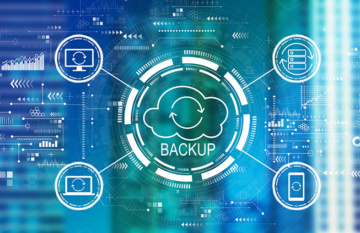
Enterprise File Sync & Share
Mobility is one of today’s leading global trends. Nowadays, we are known to type up meeting notes, respond to emails, finalize the steering committee's financial report, and send quotes to potential customers all while sitting in the train.
When employees step away from their company’s internal infrastructure, the company’s data automatically becomes more mobile. Although this increased mobility may be convenient in some ways, it also brings substantial data security risks. Therefore, companies need additional protection to keep their client data and intellectual property safe. There is also the fact that, as of 25 May 2018, the General Data Protection Regulation (GDPR) will demand more of companies in terms of data protection, and even the Swiss Data Protection Act (DSG) is currently being revised.
Aside from typical security threats like lost or stolen devices, malware and external attacks, your employees pose one of the greatest risks to your data security. When your employees lack the accessibility tools they need to do their jobs, they are likely to resort to using unauthorized third-party software or services, such as Google Drive, WeTransfer or Dropbox. In many cases, these applications are used simply to avoid email size limits. According to a study by Poneman, 61% of employees confess to sending unencrypted emails, not deleting confidential documents regularly or accidentally forwarding sensitive data to unauthorized persons.
External parties pose another threat to data security. It goes without saying that significant amounts of sensitive data and intellectual property may be generated and shared while working with business partners, suppliers or customers. When a business relationship comes to an end, there is often no agreement or guarantee that all data will be deleted by the other party.
Combining productivity and safety
Enterprise File Share & Sync (EFSS) solutions, also known as Content Collaboration Platforms, offer employees an efficient internal solution for working with colleagues and external parties. More and more companies are coming out with EFSS solutions, such as BlackBerry® (Workspaces™), Microsoft (OneDrive for Business), Google (Google Drive), Citrix (Sharefile), Axway (Axway-Syncplicity), Egnyte (Egnyte Connect) or Thru (Thru), and it can be difficult to keep track of all of them.
When evaluating an EFSS solution for your company, there are a few factors to consider in order to ensure information security without slowing down productivity:
- Intuitivity and experience: Users want user-friendly tools that provide a satisfying experience on any device.
- Mobility: Users should be able to edit documents from anywhere and information should always be up to date. Access should be enabled via web applications, desktop or mobile devices.
- Productivity: In order to simplify communication and avoid switching between different applications, the EFSS should allow users to access, create, annotate (highlight, annotate, draw, erase), edit, search and share files.
- Collaboration with internal and external parties: Employees should be able to share their files with anyone (internally or externally) at any time on any device without losing visibility or control.
- Ability to send large files: In order to avoid third-party software, employees should be able to exchange large files with their colleagues, partners or third-party companies.
- File locking: Employees should be able to temporarily lock a document for a period of time in order to minimize conflicts between versions.
- Data security: Sensitive data should be automatically encrypted to reduce the risk of stolen intellectual property.
- DRM control: Digital Right Management (DRM) at the file level should be as simple as possible. Not only should DRM mechanisms take preventative measures to protect files, they should also retroactively revoke rights to files — even in cases where they have been shared outside the internal infrastructure.
- Security: Security should be covered at both the system and file levels. Data should be encrypted whether it is in exchange, at rest or in active use. The EFSS should also allow for seamless integration with existing security solutions, such as firewalls, intrusion protection systems (IPS) or data loss prevention systems (DLP).
- Visibility: The EFSS solution should allow you to check which user did what with what sensitive data. This is particularly useful in cases of auditing or suspected violations.
- Flexible implementation possibilities: The EFSS solution should be able to meet all IT deployment needs, whether in the cloud, as a hybrid solution or on-premise.
- Total integration: A modern EFSS solution should be able to be easily integrated into an existing IT infrastructure, particularly into a mobility environment (MDM). Existing solutions or repositories, such as SharePoint, OneDrive for Business or Windows File Shares (CIFS), should also be able to be integrated into the EFSS in order to minimize complications for both IT personnel and users and to avoid redundant databases. Standard authentication mechanisms, such as SAML 2.0, oAuth 2.0 or Kerberos, should also simplify the entire authentication process and, if possible, recycle it.
BlackBerry® Workspaces™
As a BlackBerry Gold Solutions Provider, samtec relies on Blackberry’s EFSS solution. Following BlackBerry’s acquisition of the Israeli company Confidela and WatchDox, it launched its own EFSS solution: BlackBerry® Workspaces.™ This EFSS offers high productivity and high protection backed by BlackBerry® expertise. Successfully certified as a «BlackBerry Workspaces Systems Integration Professional», samtec GmbH is an ideal partner for the seamless integration of this EFSS solution into your existing IT landscape.



